Review: 2012 Kia Optima Hybrid

I’m a product of the 1970s, and as a result I was just the right age to remember when Kia came on the scene in 1992 (available for sale 2 years later), the first Kias were cheap to buy but fairly cheaply made as well prompting the running joke was that Kia meant: “Korean, Inexpensive, and Awful.” Fast forward to 2011; Kia/Hyundai products are on an impressive roll, sporting competitive looks and competitive features without the sting of a large price tag. Could the new Optima Hybrid be the frugal shopper’s green alternative to the mainstream Camry and Fusion or even the Lexus HS250h? Let’s find out.
From the outside, the new Optima is by far the looker of the mid-size hybrid segment. The Fusion hybrid is handsome but plain-Jane, the Camry has never stuck me as attractive with its oddly droopy beak and the new 2013 Camry’s exterior strikes me as “beige re-imagined”. Similarly, the Hyundai Sonata Hybrid (the Optima’s close cousin) just doesn’t get my juices flowing, looking in my mind like it is trying to be too Japanese rather than something unique. Similarly the HS250h is dreadfully boring and feels more like a Corolla with leather than a “real” Lexus. The Optima on the other hand checks all the right boxes for me from the aggressive front grille and headlamps to the kinky C-pillar. Opinions varied wildly, but I have to say Kia’s hybrid alloy wheel option set an unexplainable fire in my loins. Right about now is the point where you either agree with me or not as styling is a subjective business and indeed my better half despised the wheels as much as I loved them. Go figure. Unlike Michael who reviewed the Optima EX back in January, I don’t find the front overhang to be too much of a styling faux pax, but then again, I don’t mind the usual FWD proportions either. Like EPA numbers with hybrids, your styling mileage may vary.
On the inside, the Optima appears to be what a modern Saab might look like (if they hadn’t been bought by General Motors and lost their way). The hybrid’s cabin and option list is essentially the same as the Optima EX with the driver-focused center console, dual-zone climate control, large air vents and infotainment systems positioned high on the dash. While the major components are shared with the Hyundai Sonata, the overall look is fairly distinct. Our tester came with the optional “leatherette” stitched trim around the instrument panel, replacing the base model’s shiny plastic dash components with faux cow. The look makes the Optima’s dash fairly upscale in comparison with the Camry and Fusion competition.
While the button array on the dash was found to be distracting to some, I found this to be a relatively minor complaint and as I’m a gadget person at heart I acclimated fairly quickly. While the button layout is not as logical as I would like, by the end of the week I was successfully stabbing buttons in the dark without an issue. Standard equipment has lately been a Kia hallmark and the Optima Hybrid is no different; power mirrors, fog lamps, iPod/USB integration, touch screen radio, steering wheel audio and phone controls, Bluetooth, dual-zone climate control, one-touch power windows, air conditioned glove box, trip computer, auto-dimming rear view mirror and power driver’s seat are among the long list of standard features on the Optima Hybrid. To keep prices at that low Kia level the hybrid sports only one option: the $5,000 “premium package”. While sticker shock applies with any package this pricey, but the package contents are worth it in my book. Five-large gets you the panoramic sunroof, navigation system, backup camera, up-level Infinity sound system, HID headlamps, 17-inch wheels, power passenger seat, heated and cooled front seats, heated rear seats, snazzier trim bits, auto dimming rear-view-mirror, and the holy grail: the heated steering wheel. Seriously, who at Kia comes up with these things? They need a raise. I have a special love for the heated wheel and you can take away all my squishy dash bits if you just give me auto climate control, cooled seats and a heated wheel I’m a happy man.
Standard tech has recently become a Kia hallmark and the Optima Hybrid is no different. USB and iPod integration is standard, as is Bluetooth connectivity. The Optima Hybrid is the first Kia to come with the new UVO infotainment system by Microsoft. Comparisons to Ford SYNC are inevitable and warranted. The UVO stacks up well overall but seems to lack the polish of SYNC. Still, if you want to voice command specific tracks from your iPod, SYNC and UVO are basically your only options. Stepping up to the premium package gets the shopper Kia’s large screen navigation system and eight speaker Infinity audio system. Unfortunately the up-level package does not come with UVO which means you need to control your Apple device via the on-screen menu rather than by voice. Bummer. The navigation software is quite responsive, fairly intuitive and thankfully allows a passenger to enter a destination while the car is in motion. The premium package integrates the climate control into the large display as well as the crisp hybrid status displays. Someone needs to explain the “earth” page to me however because it seems to indicate that the earth is resting on some large roller bearings with a hybrid drivetrain making the world-go-round. No I say, it’s the legion of tiny fairies that make my globe spin!
Under the hood the Optima Hybrid beats a 2.XL four-cylinder engine, essentially the same “Theta-II” engine in the majority of Hyundai/Kia models but retuned to run on a modified Atkinson cycle. In hybrid form the engine turns out 168HP at 6,600 RPM and 154 lb-ft at 4,250 RPM. Much like the Infiniti M35h we reviewed recently, Kia removed the torque converter replacing it with a pancake motor and a set of clutch packs. The electric motor adds 40HP from 1,400-6,000 RPM and 150 lb-ft of torque from 0 to 1,400 RPM, which, like the M35h, combines with the engine’s figure in a more linear fashion than do the Prius or Fusion’s CVT motor/generator setup with a combined power output of 206HP at 6,000 RPM and 195-lb-ft of torque at 4,250 RPM. The clutch packs enable the Optima to operate under electric-only, gasoline-only, or both. Starting the engine is handled by a new starter/generator that replaces both the alternator and starter on the regular Theta II engines. Once the engine has started and has rev matched the transmission’s input shaft, the clutch packs locks up and you’re off.
Located behind the rear seats, the lithium-polymer battery pack is a technological step above the majority of hybrids including the Prius and Camry. The 1.4kWh, 270V pack’s high power density (compared to Ni-MH) is more of a necessity in the Optima however, as the platform is not a bespoke hybrid like the Prius. As a result, the trunk’s space is reduced from a middle-of-the-road 15.5 cu-ft to a smallish 9.9cu-ft. Kia was able to maintain the trunk pass-through for hauling longer items. Still, the 9.9 cu-ft is a step below the 11.8 provided in the Ford Fusion, 10.6 in the Camry Hybrid and 12.1 in the Lexus HS250. If a class trailing cargo capacity stings, the Optima makes up for it with 4-inches more front legroom than Camry, admittedly this comes at the expense of 4-inchec of legroom in the rear. Pick your poison.
Out on the road the Optima delivers a firm, quiet ride. Due to the lower cd of .25 vs the regular Optima’s .28 combined with the frequent all-electric locomotion, noise is particularly muted in the hybrid model. Speaking of all-electronic driving, rather unlike the Camry Hybrid, the Optima spends a considerable amount of time in electric-only mode, for better or worse. With the cruise control set to 65 MPH on a level highway, the Kia will run electric only until the battery is partially depleted, then start the engine and charge the battery while running on the engine, then once charged, it will shut down the engine and run on electric power again. This is decidedly different than the other mid-size hybrids on the market which run their gasoline engine constantly at highway speeds. The 6-speed automatic transmission is up-shift happy as are most sedans with a leaning towards frugality. If you prefer a smooth CVT experience the other hybrids will be your cup of tea, if shifts are more your thing, the Optima delivers in spades. When the road gets twisty the low-rolling resistance tires certainly tone down the excitement, but no more than they do in the Fusion which is probably still the “sportiest” mid-size hybrid on the market thanks no doubt to the wider 225-width rubber.
Of course Hybrids are all bout fuel economy and the Optima is no different delivering a respectable EPA score of 35/40/37 MPG (City/Highway/Combined) which places it behind the Fusion’s 41/36/39 MPG score and the (2012) Camry’s 43/39/41 but ahead of the HS250h’s 35/34/35. If highway cruising describes the majority of the miles on your future hybrid, the Optima is the natural choice as it delivers the highest highway numbers in the bunch, four MPGs more than Fusion. Of course, the glaring problem here is that a seeming bevy of new cars will match the Optima Hybrid’s 40MPG on the highway including the Cruze Eco, Fiesta, Focus and Elantra. You may have noticed I’m ignoring the Sonata Hybrid. That’s because in my mind choosing between the Optima and its kissing-cousin is more like deciding between the blue car and the red car as they differ mainly in style not substance. During our week with the Optima we easily averaged 40.4 MPG on the freeway and 32 MPG in heavy stop-and-go traffic, impressive numbers on the surface, but our week-long average fell to 35.5 MPG which is notably short of the EPA combined figure.
The Optima’s biggest feature, like most Kias, is its price tag. At $26,500 the Optima is significantly cheaper than the $28,600 Fusion or the $36,330 Lexus HS250h. Toyota has obviously decided the Optima is encroaching on their turf and the 2012 Camry Hybrid is now the cheapest in the bunch at $25,900.
So what should the greenie really buy? Is the new Camry Hybrid really the better car for the bargain hunter? No, the answer is: a turbo Optima of course. With EPA 22/34 MPG and 274HP/269lb-ft on tap for $29,600 it’s hard for the piston head to make the hybrid leap. Still, if a hybrid is in your future I would argue the Optima is the better value than the competition when you add in the $5,000 option pack. How is a $31,500 hybrid the better value? It still undercuts the loaded competition and delivers features like ventilated seats, heated rear seats, heated steering wheel and panorama roof not available on the other hybrids. If you want a smooth driving hybrid sedan under 30K, buy the Ford. If you want a great car under $30K, skip the Hybrid and just buy a turbo Optima, if you are seeking a premium hybrid sedan, give the fully-loaded Optima Hybrid a long look before you swing by the Lincoln or Lexus dealer.
Kia provided the vehicle for our review, insurance and one tank of gas.
Statistics as tested
0-30: 2.96 Seconds
0-60: 8.31 Seconds
1/4 Mile: 16.27 Seconds @ 88.4 MPH
Fuel Economy: 35.6 MPG over 489 miles

More by Alex L. Dykes
Latest Car Reviews
Read moreLatest Product Reviews
Read moreRecent Comments
- Steve Biro If the U.S. government wants to talk about banning all connected cars - or at least the collection and sharing of information from said vehicles - I’m all ears. Otherwise, don’t waste my time.
- Ajla Both parties are in favor of banning Chinese vehicles so I don't see how it won't happen in the next year.
- Add Lightness I don't waste a lot of time watching nothing much happening by watching the YouTube 6 minute highlights.
- MrIcky from my rental fleet experience, id rather drive one of these than a camry.
- Add Lightness Protectionist fear competition under the guise of paranoia.



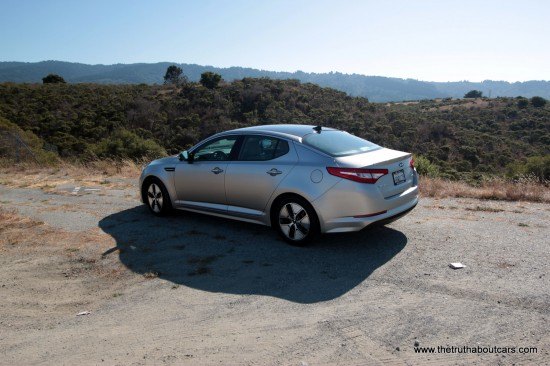



























































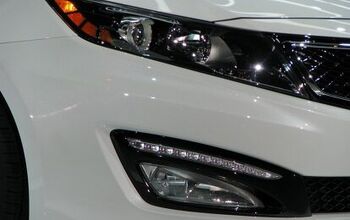
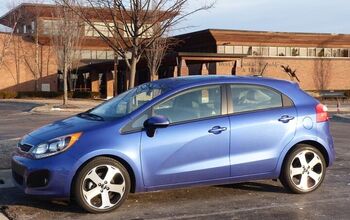
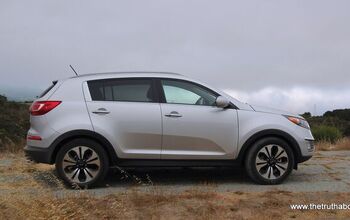
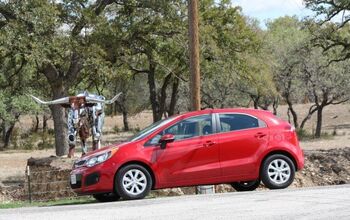
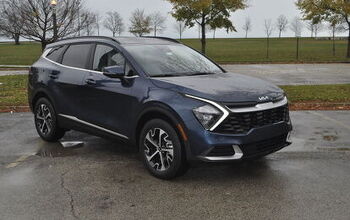

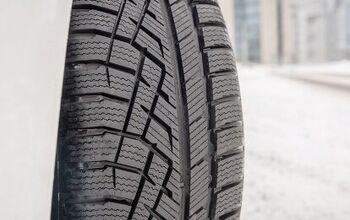
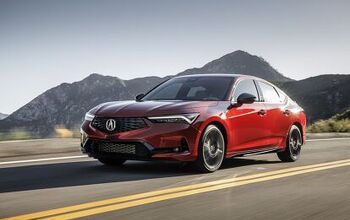
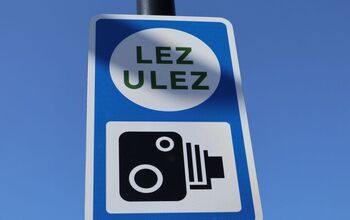

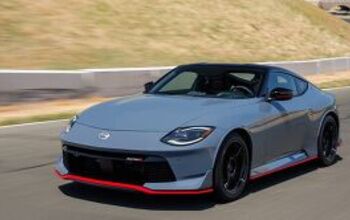

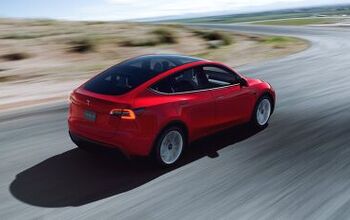
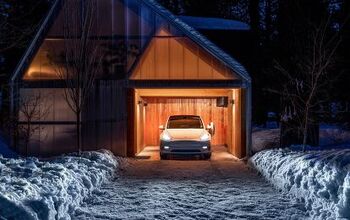
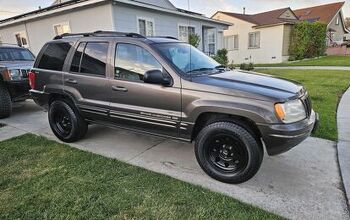
Comments
Join the conversation
Dealer has no brochures for the 2012 Optima, the website for Kia has nothing at all for the 2012 model and refuses to allow a request for any brochure due to poor programming of the site. An attempt to contact Kia customer service via the website fails due to programming in the site. A call to Kia customer service results in a 10 minute wait to be answered and even they do not have a brochure. Nowhere can you find the official specs for the 2012 Kia. Some websites purport to have them, but they must be taken with a grain of kimchi. How can anyone have much faith in a company that fails so badly in communicating with the buying public? Do you really want to spend up to $30 large with a company that cannot manage a simple website? I have cash to buy the car, but no information. I am quickly losing faith that Kia is a car maker rather than just another throw-away appliance maker. Have others had this experience?
I was SO excited about the 2012 Kia Hybrid. I test drove it last week, I was SO impressed, nice ride, great electronics, ects. I was driving home really thinking about purchasing one when a very big DUHHH, hit me. The reviewer of this car leaves out a very important design flaw for the kia 'hybrid'. I recalled the conversation I had with the car salesman during the test drive. me: "So you don't have to plug this car in?" car salesman "no, it charges it's self thru the gas engine" me: 'WoW" that's awesome. I press on the gas and it goes beyond 20 miles an hour and the car salesman points out on the nifty dash how it shows the car going from the electric battery to the gas engine. me: 'COOl, so I ask the car salesman "so the electric battery switches to the gas engine after 20 miles an hr? car salesman :" yeah, the car needs gas to go the higher speeds".....so why did it take me an hour to realize that in order to get the 'electric' battery to work I would have to drive under 20 miles an hour!!!WHO DRIVES 20 miles an hour!!!!!In essence the only time your 'electric' engine would kick in is when you coming to a stop!!!So much for 'hybrid being a great option only if your 90 years old and drive 20 mph on a regular basis.